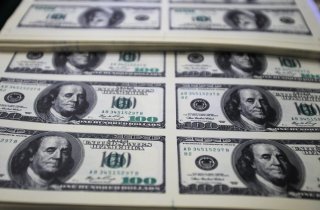Big Mortgages? Americans Need Them Thanks to a Housing Shortage.
The average purchase loan balance this week was $411,400, the highest since February. This is due, the report said, to an “extreme shortage” in housing.
As the U.S. economy begins to emerge from the coronavirus pandemic, there are various indications of a return to normalcy in the housing market.
For instance, as CNBC reported this week, home prices are rising, and with them the size of mortgages. The average purchase loan balance this week was $411,400, the highest since February. This is due, the report said, to an “extreme shortage” in housing.
At the same time, mortgage applications for purchasing a home dropped 4 percent this week from the week before, according to Mortgage Bankers Association figures cited by CNBC.
“A decline in purchase applications was seen for both conventional and government loans,” Joel Kan, an MBA economist, told CNBC. “There continues to be strong demand for buying a home, but persistent supply shortages are constraining purchase activity, and building material shortages and higher costs are making it more difficult to increase supply… 'Ongoing volatility in refinance applications is likely if rates continue to oscillate around current levels.”
Also on Wednesday, per Housing Wire, Fannie Mae announced that it was revising several forecasts for 2021.
“We have long expected that a combination of waning COVID-19-induced movement into single-family housing and continued tight inventories would lead to a slowing pace of existing home sales as the year progresses,” Fannie Mae‘s Economic and Strategic Group said in the report. “However, the latter factor appears increasingly more limiting.”
The shortage appears connected to a slowdown in new construction of late, continuing into the present, with homebuilders concerned about the high cost of lumber and other construction materials over the last 18 months.
Fannie Mae revised its 2021 real gross domestic product forecast upward to 7.0 percent, from a previous 6.8 percent. However, Fannie revised its 2022 growth forecast downward to 2.8 percent from the previous 3 percent.
“Recent indicators point to a continued recovery in the near term as COVID-19-related restrictions wane and the vaccination effort progresses. With a second-quarter growth forecast of 9.2 percent annualized, we expect this quarter’s GDP level to surpass the pre-COVID peak,” the Fannie Mae forecast said.
Fannie expressed concern over such factors as supply chain disruptions, labor scarcity, and inflationary pressures, as well as the disappointing April jobs report.
“If surging demand intersects with a tighter-than-expected supply side of the economy, faster inflation and higher interest rates are likely. This may lead to an earlier-than-expected tightening of monetary policy, which could weigh on both growth and asset prices, and become a meaningful drag on home sales, depending on the magnitude of the increase in rates,” the Fannie report said.
Stephen Silver, a technology writer for The National Interest, is a journalist, essayist and film critic, who is also a contributor to The Philadelphia Inquirer, Philly Voice, Philadelphia Weekly, the Jewish Telegraphic Agency, Living Life Fearless, Backstage magazine, Broad Street Review and Splice Today. The co-founder of the Philadelphia Film Critics Circle, Stephen lives in suburban Philadelphia with his wife and two sons. Follow him on Twitter at @StephenSilver.

